Ensuring supplier compliance is critical to maintaining quality, avoiding risks, and protecting your brand. Here’s how you can monitor and manage supplier compliance effectively:
- Set Clear Standards: Create a supplier code of conduct covering quality, labor, and environmental practices. Define measurable performance metrics like defect rates (<1%) and on-time delivery (>95%).
- Regular Audits: Conduct on-site inspections, remote reviews, and self-assessments to verify compliance with quality, labor, and environmental standards.
- Training and Communication: Provide suppliers with compliance manuals, training sessions, and regular feedback to ensure understanding and adherence to your standards.
- Address Non-Compliance: Develop action plans with clear corrective steps, timelines, and consequences for violations, ranging from warnings to contract termination.
Building strong supplier relationships and maintaining a structured compliance monitoring system ensures consistent product quality and minimizes risks. Start by defining your standards, auditing regularly, and fostering open communication with your suppliers.
Supplier Compliance Manager (SCM)
Creating Compliance Standards
After establishing effective monitoring practices, the next step is to create clear compliance standards. These standards act as benchmarks for measuring and evaluating supplier performance.
Writing a Supplier Code of Conduct
A supplier code of conduct lays out clear expectations for business relationships. For manufacturing companies like JUNYUAN BAGS, this document should cover:
- Quality Standards: Specifications for materials, durability requirements, and quality control processes.
- Labor Practices: Guidelines for fair wages, working hours, and workplace safety.
- Environmental Responsibility: Policies on waste management, sourcing sustainable materials, and eco-conscious production methods.
Be specific when detailing requirements – such as acceptable defect rates, minimum quality thresholds, and necessary certifications – to avoid misunderstandings.
Setting Performance Metrics
Performance metrics help establish measurable benchmarks for evaluating suppliers. These should align with your code of conduct and broader business goals.
| Metric Category | Key Performance Indicators | Target Range |
|---|---|---|
| Quality Control | Defect Rate | < 1% per batch |
| Delivery | On-Time Delivery Rate | > 95% |
| Documentation | Certification Compliance | 100% |
| Customization | Custom Order Accuracy | > 98% |
For custom manufacturing, metrics can also include adherence to specific design and customization requirements.
Sharing Requirements with Suppliers
Clear communication of compliance standards is essential to ensure suppliers meet expectations. Use the following methods to share these requirements effectively:
Documentation and Training
- Distribute detailed compliance manuals, including visual guides.
- Offer regular training sessions focused on quality standards.
- Update requirements through a centralized platform for easy access.
Contractual Integration
- Incorporate compliance metrics directly into supplier agreements.
- Define review periods and set evaluation criteria within contracts.
Ongoing Communication
- Hold regular compliance review meetings.
- Keep open lines of communication for questions and clarifications.
- Share feedback on performance metrics consistently.
Building a Monitoring System
Creating an effective monitoring system starts with a well-prepared team. At JUNYUAN BAGS (https://junyuanbags.com), ongoing staff training plays a crucial role in maintaining compliance. Here’s how to structure a focused training program to ensure success.
Staff Training for Compliance
To monitor effectively, employees need to be proficient in both digital tools and compliance standards. Follow these steps to create a training program that works:
- Initial System Training
Design role-specific training modules that teach system navigation, data entry protocols, and how to generate accurate reports. Include hands-on practice to help employees apply what they learn. - Creating a Compliance Knowledge Base
Develop a centralized resource that includes compliance requirements, procedures, and best practices. Keep it up to date as standards and industry expectations evolve. - Ongoing Education
Offer regular refresher sessions to cover new compliance rules, system updates, and common monitoring challenges. Use practical exercises to mimic real-world scenarios, helping staff retain their skills and stay prepared.
sbb-itb-1e6451b
Performing Supplier Audits
Audits turn compliance standards into measurable quality checks. At JUNYUAN BAGS, a strict audit framework ensures suppliers meet expectations in quality control, labor practices, and environmental standards.
Audit Methods
Different methods address specific verification needs:
- On-site Inspections
Include facility tours, observing processes, interviewing staff, reviewing documents, and checking equipment. - Remote Reviews
Use virtual facility tours, digital document analysis, online meetings with key personnel, and system access checks. These serve as a complement to on-site inspections. - Supplier Self-Assessments
Involve standardized questionnaires, submitted documentation, performance metrics reporting, compliance certifications, and internal audit results.
Audit Schedule Planning
A well-planned audit schedule considers supplier risk levels and past performance, aligning with industry standards. The frequency and timing of audits should match the supplier’s risk profile, ensuring effectiveness without causing unnecessary disruption. Once the schedule is set, focus shifts to key compliance areas.
Audit Focus Areas
Supplier audits should concentrate on these essential areas:
- Quality Control Systems
Review manufacturing controls, testing procedures, quality certifications, and defect tracking systems. - Labor Practices
Check working hours, wages, safety equipment usage, training programs, and employee feedback systems. - Environmental Standards
Evaluate waste management, energy efficiency, chemical storage, and sustainability efforts.
Maintain thorough audit records and establish clear communication with suppliers to address findings quickly. Regular follow-ups are crucial for driving improvement and maintaining compliance.
Managing Non-Compliance
When audits reveal non-compliance, it’s crucial to respond quickly and effectively. At JUNYUAN BAGS, the focus is on addressing these issues through teamwork and maintaining strict quality standards. Moving from identifying problems to implementing solutions ensures steady progress.
Creating Action Plans
A good action plan tackles immediate problems while addressing their root causes. Here’s how to structure your response:
- Issue Documentation: Record each violation, including dates, locations, and severity.
- Root Cause Analysis: Pinpoint the factors that led to the non-compliance.
- Corrective Actions: Detail the steps needed to fix each issue.
- Timeline: Set achievable deadlines for implementing changes.
- Verification Method: Specify how compliance will be confirmed after changes are made.
Clear corrective actions are just the start – working closely with suppliers is essential.
Working with Suppliers
Building strong relationships with suppliers is key to long-term compliance. Focus on these strategies:
- Open Communication: Schedule regular updates to discuss progress and challenges.
- Resource Sharing: Provide training materials and share best practices.
- Technical Support: Offer guidance to help suppliers make necessary changes.
- Progress Tracking: Use shared tools, like dashboards, to monitor improvements.
This collaborative approach encourages suppliers to see compliance as a chance to improve, not just a box to check.
Setting Consequences
When corrective actions aren’t followed, clear consequences must be enforced:
| Violation Level | Response | Timeline to Correct | Impact |
|---|---|---|---|
| Minor | Written warning | 30 days | Increased monitoring |
| Moderate | Temporary hold on new orders | 60 days | Reduced business volume |
| Severe | Contract review | 90 days | Possible termination of relationship |
This system ensures suppliers meet required standards. For those who show dedication to improvement, consider offering perks like preferred supplier status or additional business opportunities.
Summary
Supplier compliance monitoring plays a crucial role in maintaining quality standards and fostering long-term business relationships. At JUNYUAN BAGS, this structured approach ensures consistently high-quality, customizable sports and travel bags.
Key elements of an effective compliance system include:
- Defined Standards and Codes of Conduct
- Regular Audits and Performance Reviews
- Clear Actions for Addressing Non-Compliance
- Ongoing Documentation, Communication, and System Updates
Strong partnerships with suppliers are the backbone of successful compliance efforts. JUNYUAN BAGS’ focus on quality control and customization highlights how effective monitoring enhances product quality and customer satisfaction.
For continuous success, compliance monitoring should involve:
- Thorough documentation and tracking
- Open and regular communication with suppliers
- Clear penalties for non-compliance
- Ongoing system updates based on performance insights
Related Blog Posts
- Top 10 Must-Ask Questions When Choosing a Custom Bag Supplier (2024 Guide)
- How to Ensure Quality Control When Sourcing Custom Bags from Overseas Suppliers
- Eco-Certifications 101: What Your Custom Bag Supplier Must Have in 2024
- How to Negotiate the Best Pricing with Your Custom Bag Supplier (Without Sacrificing Quality)




 Mobile/What's App/Wechat
Mobile/What's App/Wechat E-Mail
E-Mail ADD
ADD




